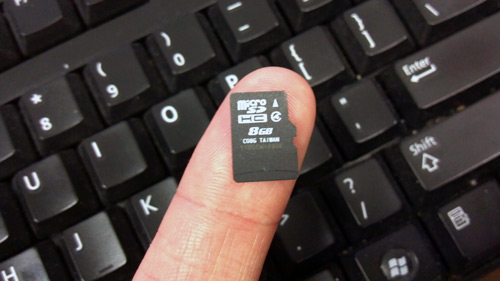I have been waiting for this blog post for about a month. The “Thanksgiving Special” where I can list all the things in my professional world for which I am thankful. You know, the easy assignment that is all opinion and done in a flash! However, two things happened this week that sent my thoughts in another direction. One was Thanksgiving Day with the extended family in for a visit and the other was the most recent addition to my family in the form of my son, who was born on the 19th of November.
Between familial conversations and tech support regarding all of the emailed pictures of our newborn I became acutely aware of the general lack of tech proficiency when it comes to the older generations in my family. This is, of course, a gross generalization. However, the line that I get when they ask for help is that, “things change so quickly” or “I just can’t keep up with that stuff anymore.” If you think that I am about to tell you that this annoys me you’re wrong; it scares the hell out of me. When you think about the current average life expectancy along with the fact that I at least have to keep up with all of the tech changes until my four-day-old kid is off to college, well let’s just say that my estimate is that I’ll be spending somewhere around a year of my life going through tutorials and webinars (or whatever replaces them) over the next 20.
When I think about it, in the last two years I’ve gone through three operating systems on my mobile phone alone, not to mention the myriad upgrades and changes to most every software application I use. Is it any wonder that our clients are hesitant to sign on for laser scanning when they find out that it requires a new piece of software? Perhaps this is the reason that we provide so many deliverables in traditional A&E platforms. While this keeps the client from having to learn (or purchase) a new piece of software there is one major drawback: These traditional CADD applications are a bit limiting compared to applications that are natively designed for point clouds. I often find myself with a beautiful 3D model and all the client sees are 2D slices.
While the plethora of purchases, mergers and acquisitions during this past year may lead to the increased use of point clouds in more mainstream applications this is far from guaranteed. If history is any guide it will still require the purchase of an add on module or plug-in. That is to say that we may still find that many non-laser scanning professionals are unable to utilize point clouds in the applications that they use every day. So, where does that leave us? I think it leaves us with an opportunity.
The last few years have seen an explosion in the world of infographics and Graphical User Interfaces (GUI). The latest movement in this direction is the Natural User Interface. The idea is to provide access to data through systems and tools that the user already understands through previous experiences. Augmented Reality provides many opportunities to achieve such an interface but so do other HTML-based systems. It’s up to us to put these systems to use for our clients if we ever want them to realize the potential that laser scanners and 3D imaging bring to many different industries.
Given the breadth of this topic I’ll break it up over a couple of posts, but let’s start by looking into the deliverable concept. Too often we find ourselves telling clients what the deliverable should be based upon our perception of industry standards. While these options should always be offered, a clear understanding of what your client wants to do with the data you are collecting may provide ideas for better alternatives to the standard deliverables. Gaining this understanding requires both time and attention from all of the parties involved. A word of caution: This can be difficult ground to cover. I have had experiences that run the gamut from clients that were too suspicious of my motives to share any information to clients that were unable to participate in discussions due to the project schedule to clients that are still asking to discuss things over a year after the project was delivered! I can’t speak for the rest of the world but here in the U.S. we have a habit of wanting a nice clean solution to problems. If you are calling me in to provide documentation of systems that you have up and running without any accurate documentation, there are no nice clean solutions. There are answers, and solutions are definitely available, but there will be a lot of decisions that have to be made along the way.
Unfortunately, quite a few of them (but not all!) need to be made before we start collecting any data in the field. This type of business relationship is atypical in our age of outsourcing and infinite subcontracting; however, it was quite common during the initial phases of industrialization. In fact it was absolutely necessary in order to build the infrastructure upon which the last century flourished. I think that many of you will agree that we are on the leading edge of the next great build of infrastructure, whether it is any one of the various energy related systems being built or the management of our physical world through our increasingly capable computing power. As awe-inspiring as that may be, it’s up to us to determine the nitty gritty details. The last thing I want to be is too clever by half.
No, actually, the last thing I want to do is learn another OS this year.






